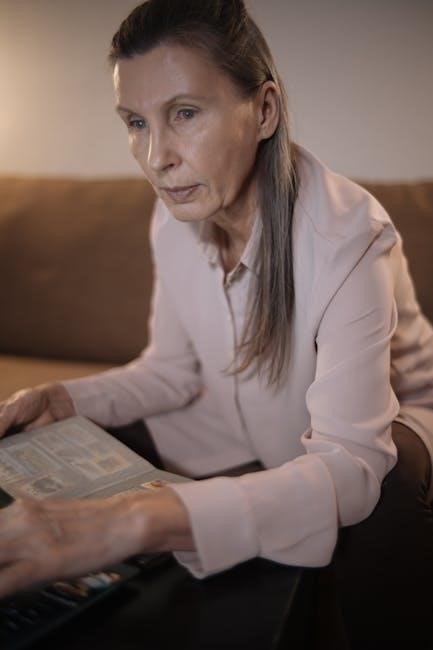Hatha Yoga combines physical postures, breathing techniques, and meditation to promote holistic well-being. A 60-minute sequence offers a balanced practice, reducing stress and improving flexibility while enhancing mental calm and focus, making it ideal for all levels, including beginners.
What is Hatha Yoga?
Hatha Yoga is a traditional practice combining physical postures (asanas), breathing techniques (pranayama), and meditation to balance the body’s energy. It focuses on mastering physical poses and breath control to achieve mental and physical harmony. Designed for all levels, Hatha Yoga emphasizes proper alignment, strength, and flexibility, making it an ideal foundation for beginners. It also incorporates relaxation and stress reduction, offering a holistic approach to well-being. A 60-minute sequence provides a comprehensive session, blending these elements to enhance overall health and mental clarity, while fostering a deeper connection between body, breath, and mind.
Physical and Mental Benefits of Hatha Yoga
Regular Hatha Yoga practice enhances physical strength, flexibility, and balance while improving circulation and posture. Mentally, it reduces stress, anxiety, and fatigue, promoting relaxation and focus. A 60-minute sequence can lower blood pressure, boost the immune system, and improve sleep quality. It also enhances respiratory efficiency and mental clarity, fostering emotional well-being and calm. These benefits make Hatha Yoga a powerful tool for overall health and vitality, accessible to all ages and fitness levels. Consistent practice can lead to long-term improvements in both physical and mental health, creating a balanced and harmonious lifestyle.
Structure of a 60-Minute Hatha Yoga Sequence
A 60-minute Hatha Yoga sequence typically includes a warm-up, key postures, breathing techniques, and final relaxation. Designed for beginners, it focuses on foundational asanas and pranayama, ensuring a balanced practice that combines physical movement with mental calm and breath awareness to enhance overall well-being.
The 60-minute Hatha Yoga sequence begins with a gentle warm-up to prepare the body and mind. This 10-minute introduction includes light movements, neck rolls, and shoulder stretches to release tension. Sun salutations are often incorporated to gradually increase blood flow and flexibility. Breathing techniques, such as Ujjayi (ocean breath), are introduced to calm the nervous system. The warm-up transitions smoothly into foundational postures, ensuring a steady pace for beginners. This initial phase sets the tone for a balanced practice, blending physical movement with mental focus and breath awareness to create a meditative flow throughout the sequence.
Key Components of the Sequence
A 60-minute Hatha Yoga sequence typically includes a variety of postures (asanas), breathing techniques (pranayama), and relaxation methods. The sequence is structured to gradually increase physical intensity, starting with gentle stretches and moving into standing, seated, and balancing poses. Twists and inversions are incorporated to enhance flexibility and strength. Each pose is held for a few breaths to encourage mindfulness and alignment. Breathing techniques, such as Ujjayi and Bhramari, are integrated to calm the mind and improve respiratory function. The sequence concludes with a cool-down, including gentle stretches and guided meditation, ensuring a balanced and rejuvenating practice.
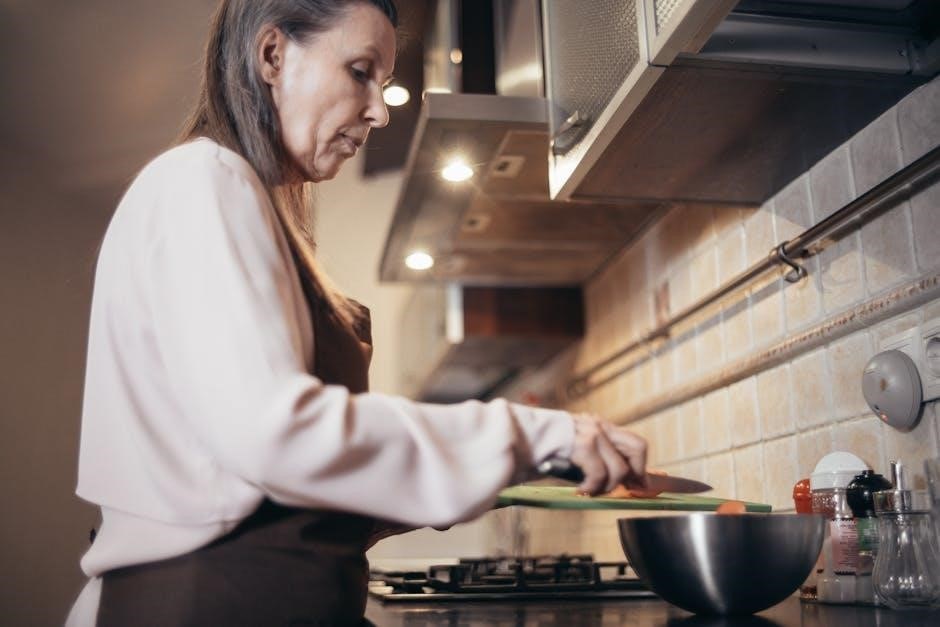
Main Asanas (Postures) in the Sequence
The sequence includes essential postures like Mountain Pose, Cobra Pose, Cat-Cow, and Downward Dog. Standing poses, seated forward bends, twists, and balancing poses are also incorporated to enhance flexibility and strength, promoting overall well-being.
Standing Poses
Standing poses form the foundation of many Hatha Yoga sequences, promoting balance, strength, and proper alignment. Common poses include Mountain Pose (Tadasana), Warrior I and II (Virabhadrasana I & II), and Triangle Pose (Trikonasana). These postures help improve posture, enhance stability, and prepare the body for more complex movements. They also engage the legs, hips, and core, fostering grounding and energy flow. Standing poses are often held for several breaths, encouraging mindfulness and breath awareness. They are essential for building confidence and setting intentions for the practice, making them a vital component of a 60-minute Hatha Yoga sequence.
Seated Poses
Seated poses in a 60-minute Hatha Yoga sequence are designed to deepen stretches, improve flexibility, and strengthen the lower back and abdominal muscles. Common poses include Seated Forward Bend (Paschimottanasana), Seated Twist (Bharadvajasana), and Easy Pose (Sukhasana). These postures often follow standing poses, allowing the body to transition into more introspective and calming movements. Seated poses are held for several breaths to encourage relaxation and breath awareness. They also prepare the body for deeper twists, folds, and balances, making them a crucial part of the sequence. Additionally, they provide an opportunity to focus on alignment and inner awareness, enhancing overall mind-body connection.
Supine and Prone Poses
Supine and prone poses are essential in a 60-minute Hatha Yoga sequence, offering relaxation, spinal alignment, and strength. Supine poses, such as Apanasana (Knees-to-Chest Pose) and Supta Baddha Konasana (Reclined Bound Angle Pose), promote deep relaxation and hip flexibility. Prone poses, like Sphinx Pose and Cobra Pose, strengthen the back muscles and improve posture; These poses are often used toward the end of the sequence to prepare the body for final relaxation. They enhance breath awareness, reduce muscle tension, and create a calming effect, making them a vital component of the practice, suitable for all levels of practitioners.
Breathing Techniques (Pranayama)
Pranayama involves conscious breathing to balance energy and calm the mind. Techniques like Ujjayi (Ocean Breath) and Bhramari (Bee Breath) promote relaxation and focus, enhancing overall well-being in practice.
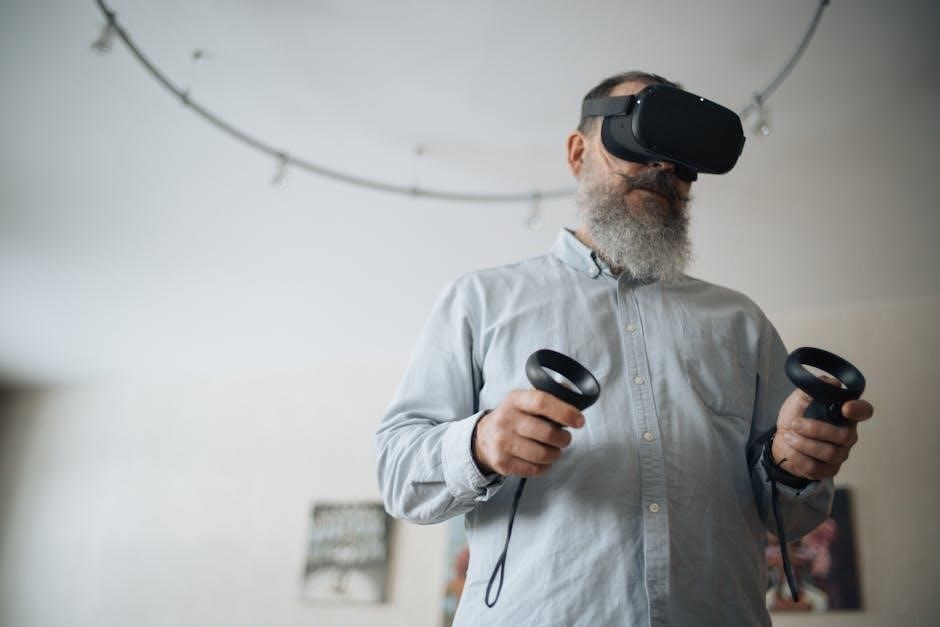
Ujjayi (Ocean Breath)
Ujjayi, or Ocean Breath, is a foundational pranayama technique. Practiced by inhaling and exhaling through the nose with a slightly closed throat, it mimics the sound of waves. This breath calms the nervous system, promoting relaxation and focus. Common in Hatha and Vinyasa flows, Ujjayi helps maintain steady breathing during asanas, enhancing the connection between movement and breath. It is particularly beneficial for stress reduction and improving respiratory balance, making it an essential component of a well-rounded yoga practice. Regular practice of Ujjayi fosters mindfulness and prepares the body for deeper meditative states, ensuring a harmonious flow throughout the sequence.
Bhramari (Bee Breath)
Bhramari, or Bee Breath, is a calming pranayama that mimics the buzzing of a bee. Practiced by inhaling deeply and exhaling slowly while humming, it creates a soothing sound. This technique helps reduce stress and anxiety by calming the nervous system. Bhramari also enhances focus and prepares the mind for meditation. Regular practice can lower blood pressure, improve respiratory health, and promote emotional balance. Often included in Hatha Yoga sequences, Bee Breath is a simple yet powerful tool for cultivating inner peace and mental clarity, making it an excellent addition to any yoga practice, especially during moments of tension or stress.
Anuloma Viloma (Alternate Nostril Breathing)
Anuloma Viloma, or Alternate Nostril Breathing, is a powerful pranayama that balances the body’s energy. It involves closing one nostril and breathing through the other, then switching. This technique harmonizes the nervous system, calms the mind, and improves respiratory function. Regular practice reduces stress, enhances concentration, and prepares the body for meditation. It is often included in Hatha Yoga sequences to promote balance and inner harmony. Anuloma Viloma is simple yet effective, making it accessible to all levels of practitioners. Its inclusion in a 60-minute sequence ensures a holistic practice that nourishes both body and mind, fostering overall well-being and relaxation. It is a cornerstone of Hatha Yoga’s breathing practices.
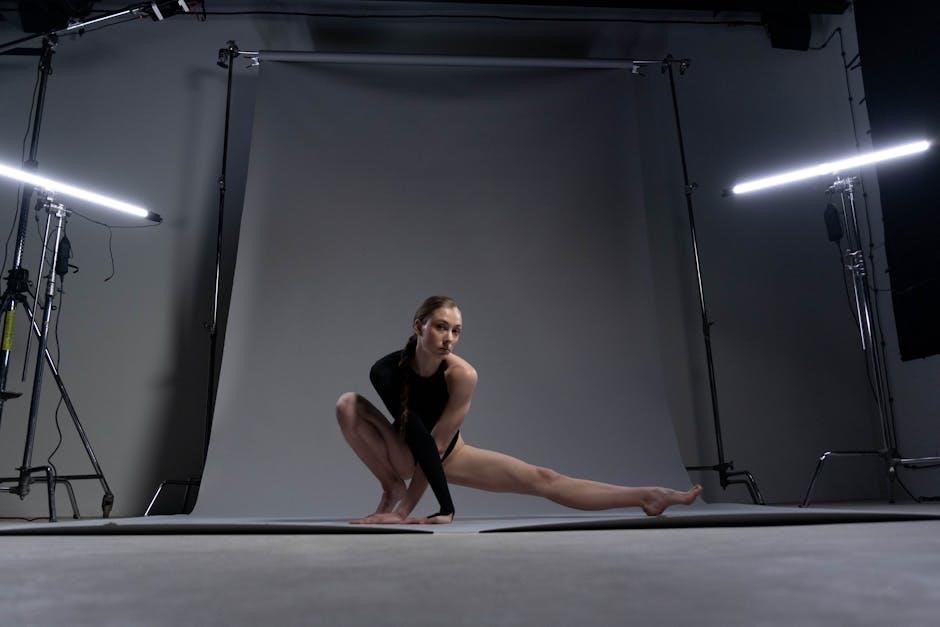
Inversions and Balances
Inversions and balances strengthen core and focus, promoting balance and harmony. Modified poses suit all levels, enhancing stability and grace in practice.
Modified Poses for Beginners
Modified poses in Hatha Yoga are essential for beginners, ensuring safety and accessibility. For example, Vrksasana (Tree Pose) can be practiced with a wall for support, while Setu Bandha Sarvangasana (Bridge Pose) can be gentle on the spine. Adho Mukha Svanasana (Downward-Facing Dog) can use bent knees to ease tension. These adjustments allow practitioners to build strength and confidence gradually. Props like blocks and blankets are encouraged to enhance comfort and alignment. Modified inversions, such as legs-up-the-wall pose, offer calming benefits without strain. These adaptations make the practice inclusive, fostering a strong foundation for future progress in more advanced poses.
Advanced Inversions
Advanced inversions in a 60-minute Hatha Yoga sequence challenge balance, strength, and mental focus. Poses like Adho Mukha Vrksasana (Handstand) and Pincha Mayurasana (Feathered Peacock Pose) require preparation and control. Eka Pada Rajakapotasana (One-Legged King Pigeon Pose) combines inversion with deep stretching. These postures invert the body, enhancing blood flow to the brain and promoting clarity. Practitioners should warm up thoroughly and use props or walls for support if needed. Advanced inversions energize the body and calm the mind, offering profound benefits for experienced yogis. They are a culmination of the sequence, fostering confidence and mastery while deepening the connection between body and breath.
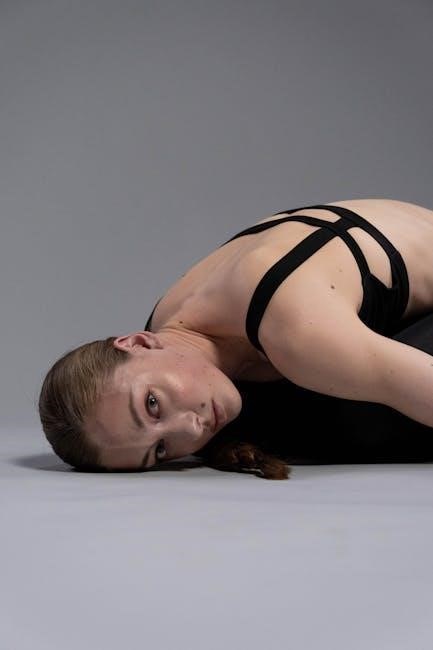
Cool Down and Final Relaxation
The sequence concludes with gentle stretches, slow transitions, and guided meditation to calm the mind. Savasana (Corpse Pose) promotes deep relaxation, rejuvenating the body and soul, ensuring a peaceful finish.
Gentle Stretches and Transitions
The cool-down phase incorporates gentle stretches to release tension and promote flexibility. Cat-Cow, Child’s Pose, and Seated Forward Fold are common, easing the spine and major muscle groups. Slow, deliberate movements transition smoothly between poses, maintaining a meditative flow. These stretches prepare the body for final relaxation, fostering a calm and centered state. Breathing remains deep and steady, enhancing the release of physical and mental stress. Gentle transitions ensure a seamless flow, allowing practitioners to surrender fully into each stretch, deepening the therapeutic benefits of the practice and setting the stage for a profound final relaxation.
Guided Meditation and Savasana
The practice concludes with guided meditation and Savasana, a deep relaxation pose. Participants lie comfortably on their backs, focusing on calm, rhythmic breathing. The instructor leads a meditative journey, encouraging mindfulness and release of tension. This final phase rejuvenates the body and mind, fostering a sense of inner peace. Savasana allows the body to absorb the benefits of the sequence, while the guided meditation quiets the mind, promoting emotional balance and clarity. This serene ending leaves practitioners feeling refreshed, centered, and prepared to carry the calmness of their practice into daily life, making it an essential closure to the 60-minute sequence.
Hatha Yoga is a powerful tool for mind-body harmony. A 60-minute sequence offers a balanced practice, fostering physical strength, mental calm, and emotional well-being. Regular practice enhances overall health and resilience, making it a timeless approach for holistic well-being;
Importance of Consistency in Practice
Consistency is key to experiencing the full benefits of a 60-minute Hatha Yoga sequence. Regular practice strengthens the body, enhances flexibility, and improves mental clarity. Over time, it fosters resilience, emotional balance, and a deeper connection to one’s inner self. Even small, steady efforts lead to profound changes, making Hatha Yoga a sustainable practice for long-term well-being.
